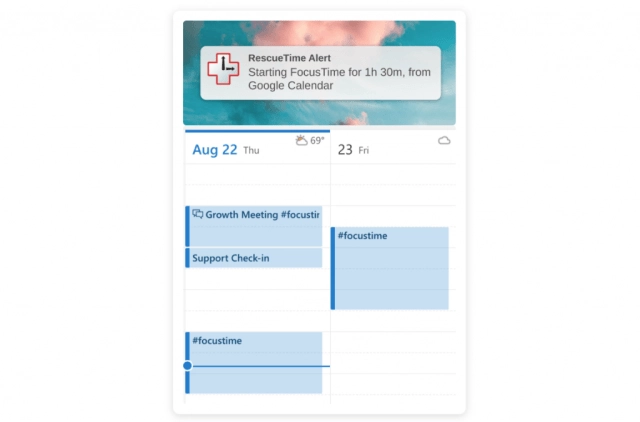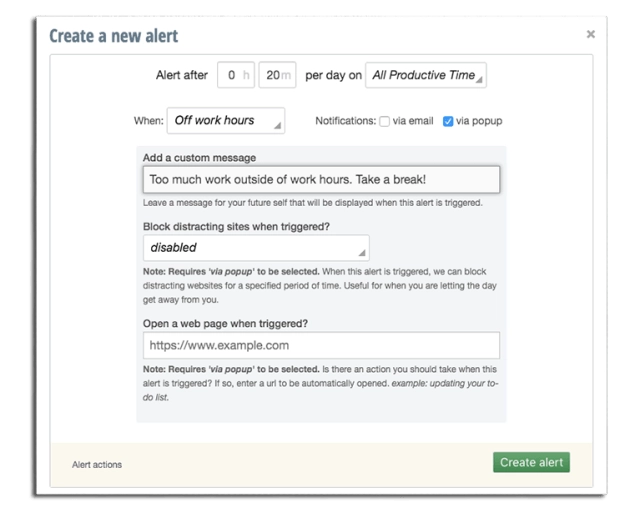Excerpt
While there’s tons of advice out there on the mechanics of how to set SMART goals, what often gets missed are the nuances that make all the difference.

We’ve all missed the mark on goals in our work and lives. Maybe you wanted to learn a new skill, build a better workday habit or wake up earlier. You may have started with the best intentions, followed the SMART goals system, and even made a bit of progress.
But when you check in a few months later, it’s clear that you lost your way.
It’s inevitable that we don’t hit all our goals. And when this happens, we love to blame our failures on circumstances. Some unexpected task got in the way. Our priorities changed or our mission shifted.
But more often than not, the failure was baked into the goal itself.
While there’s tons of advice out there on the mechanics of how to set SMART goals, what often gets missed are the nuances. A poorly framed goal sends you down the wrong path. It builds in friction that almost guarantees you won’t cross the finish line.
So how can you make sure your goals aren’t setting you up for failure before you even start?
What are SMART goals?
Let’s start with the basics. There are many different methods for setting effective goals. (We even wrote an entire in-depth guide on them here). But one of the most agreed-upon is called SMART goals.
Most commonly attributed to management guru Peter Drucker, the SMART goals framework dictates that your goals should be:
- Specific: You know exactly what needs to get done. There’s no ambiguity or vagueness in how and when your goal will happen.
- Measurable: You have a meaningful and motivating way to track progress and measure your results. You’ll know if you’ve hit your goal 80%, 100% or missed the mark entirely.
- Achievable: You’re not shooting for the moon (unless you think you can realistically hit it).
- Relevant: You’re working towards something that is worthwhile, timely, and deeply connected to your own skills and long-term goals. You’ll be motivated to work towards this goal.
- Time-bound: There are clear start and end dates you’re working towards. (It’s important to note that SMART goals are most useful for more short-term goals—one month to one year).
On the surface, SMART goals are great at ensuring you don’t fall into bad goal-setting red flags. For example:
- Hastily choosing a number or metric to go after without thinking it through. For example, saying you want to increase sales by 40% without having a reason why that’s the metric and goal to go after.
- Glossing over how other teams will be involved. For example, saying that you’ll build a new feature without involving your product team.
- Missing a crucial step along the way. For example, agreeing on a clear first step and final result but not knowing how you’re going to get from A to B.
However, being successful with SMART goals comes down to more than just what they say. What often gets glossed over is not what’s in your goal, but the words you use to explain it.
The language of SMART goals: How to set goals you’ll actually achieve

You can use the SMART goal framework but still miss the mark, lose motivation, or get sidetracked. But why is that?
The core issue is the language you use to describe your goal.
Language shapes our actions. The words you use to frame your intentions can either give you a head start or completely derail your efforts. One of the most common examples is focusing too much on negative goals.
While many of us set goals around something we want to stop doing, those negative goals actually demotivate us. In fact, research shows that negativity causes people to avoid challenges.
In order to stay motivated to hit your SMART goals, it’s important that you use positive language. Here are a few specific examples:
1. Replace “should” with “will”
In her book The Crossroads of Should and Must, artist Elle Luna describes the word should as a non-commitment. “Should” is a non-starter for your goals. Instead, be specific and use action words like “will”.
For example, “By the end of the week, I should will finish and send the final website design to my client.”
2. Change “soon” to a specific timeline
Despite time-bound being a large part of the SMART goal system, many people are afraid to commit to an actual specific date. But your goals lose power if they don’t have an end date.
For example, “I will send 10 cold emails to prospective clients soon by 4pm on Wednesday.”
3. Switch “need to” to “want to”
Saying you “need” to do something frames your goal in a negative way. Instead, saying you “want” to do it is a much more positive way to stay motivated. (This is mostly when talking about personal goals. In the workplace, there are many situations where you “need” to do something).
For example, “I need to want to wake up at 6:30 am each morning so that I can go to the gym before work.”
4. Replace “quit” with “stop”
While your goal might be to change a behavior, saying you want to “quit” has all sorts of negative connotations that can get in your way. No one wants to feel like a quitter (even if they want to quit something). Instead, say you’ll “stop” doing it.
For example, “For the next 3 weeks, I will quit stop eating lunch at my desk and take a proper break.”
5. Change “Never” to a specific action
Few things turn us off from doing a task like feeling overwhelmed and pressured. When you say you’ll “never” do something again, you’re putting an inordinate amount of pressure on yourself and will be more likely to give up or procrastinate.
Instead, set in place a replacement action for the thing you want to “never” do again.
For example, “I will never be late add a 15-minute buffer in between my meeting slots each day so I won’t be late for the Monday morning stand up meeting again.”
Researchers from Cornell University recently found that RescueTime is one of the best ways to stay accountable to your goals. Find out more and sign up for free today!
5 examples of SMART goals for better workdays
Some of the biggest issues that get in the way of your productivity—motivation, procrastination, focus—are mainly emotional issues. Yet we treat workplace goals like they’re strictly issues of logistics.
Need to do this task? Find time for it on your calendar.
But we all know that just because we have 8 hours in the office, doesn’t mean we have 8 hours to do work. Instead, the right goals can help inspire us to get more out of each day.
Here are some examples of specific SMART goals you can use to stay motivated and inspired all day long. Each one moves a common workplace goal from a vague idea to a clear objective with a process, deadline, and workflow attached to make it easy.
1. Spending more time on meaningful work
The average knowledge worker has an average of just 2 hours and 48 minutes a day for productive work. With such little time to work, setting a goal around more focused time is a great way to get more done each day.
Bad goal: “I want to make more time each morning to work on my most important task.”
Unclear goal: “I want to spend 2 hours each morning working on my most important task.”
SMART goal: “Every day this week, I will work on our new marketing site redesign from 8:30 – 10:30 am without interruption.”
Why this works: Not only does this goal set a clear timeline and expectations, it does so in a positive way that is realistic and easy to stay motivated towards. Each day, you know what you’re doing, when you’re going to do it, and why it matters.
How to set this goal in RescueTime
RescueTime helps you focus by blocking distracting websites and automatically putting your phone and Slack account in do-not-disturb mode when you need to focus.
Simply start a FocusTime session from your RescueTime menu or schedule them automatically using our new Calendar integration.

2. Building your work network or client list
One of the best things you can do for your career is to build a strong network. Yet talk to most people about networking and they’ll roll their eyes. This is even harder for people who find it difficult to be social and reach out to strangers.
Instead, setting clear guardrails about how, when, and where you’re going to network makes it much more manageable.
Bad goal: “I want to build a better professional network.”
Unclear goal: “I want to use my LinkedIn connections to learn more about possible career opportunities.”
SMART goal: “I will schedule 2 hours on Thursday afternoon to personally email 10 people I’m already connected with on LinkedIn and ask them if they have 15 minutes to talk about their career path and how I should move forward.”
Why this works: This SMART goal answers all of the key questions—what you’re going to do, when, the process you’re going to use, and what you expect out of it. Additionally, it does so in a positive and motivating way, turning a big, audacious goal into something manageable.
3. Spending less time on email and communication during the workday
Even though we said that negative goals aren’t good for motivating you, it’s hard to get away from them. One of the best things you can do for your productivity is to reduce your communication time during the workday.
Bad goal: “I should stop checking my email so much during the workday.”
Unclear goal: “I will only check my email and Slack messages a couple of times each workday.”
SMART goal: “I will check and answer my emails and Slack messages from 10:30–11 am and then again from 3–3:30 pm. My inbox and chat windows will be closed outside of those times.”
Why this works: It’s easy for a “couple of times” to turn into all day. Instead, this SMART goal clearly outlines when and for how long you’ll check your messages as well as your process for ensuring you don’t fall back into bad habits.
How to track this goal in RescueTime
RescueTime can track the time you spend on communication tools and let you know when you’re going over your goals.
For example, here’s my goal for less than 30 minutes on email during the morning. (I get a notification when I go over that automatically puts me into FocusTime).

Get the ‘Save Me From My Inbox’ Alert Recipe.
4. Learning a new workplace skill
If you want to grow your career, you need to keep growing your skills. Yet finding time for this “important” task among all the other “urgent” ones isn’t easy.
Bad goal: “I want to learn how to code.”
Unclear goal: “I will spend time each day practicing basic HTML so I can build a personal website.”
SMART goal: “Every Monday, Wednesday, and Friday from 6:30–8:30 pm, I will work towards the Responsive Web Design certificate course on freeCodeCamp.”
Why this works: This SMART goal leaves nothing unclear. You know the skill you want to learn, how you’re going to learn it, and when and where that will happen.
5. Leaving work at work
It’s easier than ever to let work slip into all aspects of your life. In fact, we discovered that 40% of people use their work devices after 10pm. But we need to be able to disconnect from work to stay motivated and productive in the long-term.
Bad goal: “I’m going to quit looking at work projects once I leave for the day.”
Unclear goal: “I want to stop checking work emails and spending time on work projects after the end of the workday.”
SMART goal: “I will set a RescueTime Alert to notify me when I’ve spent more than 20 minutes on work tasks outside of the workday to help build a habit of leaving work at work.”
Why this works: Clarity is key. This SMART goal includes the specific process you’re going to take as well as the reasoning behind why you picked this goal in the first place.
How to track this goal in RescueTime
Once you set custom Work Hours in RescueTime you can create goals for inside/outside them.
For example, you can set an Alert for 20 minutes (or more) of productive time outside of Work Hours so you know when you’ve passed your limit.
